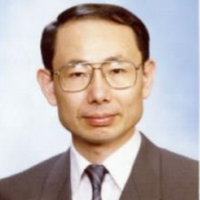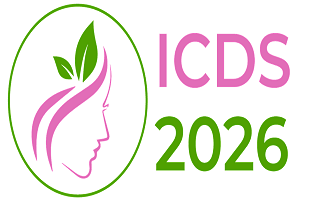3rd International Conference on
Dermatology & Skincare
April 16-17, 2026 | Chicago, USA

Address: 9300 Bryn Mawr Avenue, Rosemont, IL 60018, United States
ICDS 2026

Xidian University, Japan
Abstract:
Leveraging the deep penetration capability of near-infrared (NIR) light
through the skin, we are able to noninvasively visualize the subcutaneous blood
vessel structure. However, deep-seated structures suffer from severe blurring
due to intense light scattering within body tissues. To address this, we have
devised scattering suppression techniques enabling the acquisition of clear
three-dimensional (3D) images of absorbing structures within turbid media, such
as the blood vessel network inside animal bodies. In transillumination imaging,
we can effectively mitigate diffusely propagated light components by
selectively detecting near-axis scattered light. In addition, we can achieve
superior blur reduction by employing a depth-dependent point spread function
(PSF) derived from the diffusion approximation to the energy transfer equation.
Moreover, this PSF facilitates deep-learning techniques, generating abundant
training pairs of both unblurred and corresponding blurred images at various
depths below the skin surface. Through neural networks trained on this dataset,
we successfully reconstruct clear 3D images from a single blurred image, even
when the depth of the absorbing structure remains unknown. Experimental
validation, involving studies with both animal and human subjects, underscores
the validity and versatility of our developed techniques. Expanding beyond
structural imaging, we extend this methodology to functional imaging, enabling
visualization of physiological changes occurring beneath the skin surface. By
utilizing NIR light to measure physiological parameters like oxygen saturation
within subcutaneous blood vessels, our technique becomes a valuable biomedical
tool with applications in dermatology.
Biography:
Koichi Shimizu received M.S. (1976) and Ph.D. (1979) degrees, from University of Washington, Seattle, USA. He was Research Associate in University of Washington 1974-79. He was an Assistant-, an Associate- Professors, and a Professor in Hokkaido University, Sapporo, Japan in 1979-2016. He is currently a Professor Emeritus of Hokkaido University, Japan, an Invited Research Professor of Waseda University, Japan and a Professor of Xidian University, Xi’an, China. He has been engaged in the studies of biomedical engineering. He served as associate editors of IEEE Trans. ITB in 1999–2007 and Advanced Imaging from 2023. He has been a Fellow of the Electromagnetics Academy, and an editorial board member of Scientific Reports, Nature.
